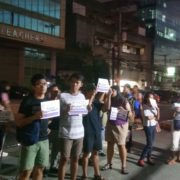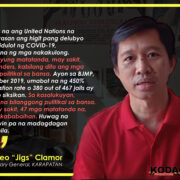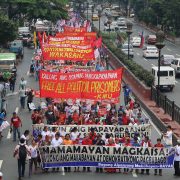There’s funding to respond to COVID-19 – the problem is at the top
By Sonny Africa
The Duterte administration is still not clear on what its COVID-19 response is and how much this will cost. On top of that, it also doesn’t know how to fund this because it refuses to let go of its sacred cows – infrastructure, debt service, and the accumulated wealth and profits of the country’s economic elite.
Millions of poor Filipino families are suffering the worst mass unemployment in the country’s history because of the military lockdown since March. This has even been extended for another two weeks. Yet, tragically, the nation still does not know how far it really is in dealing with its worst public health crisis ever.
It is over two months since the first confirmed case of COVID-19, nearly four weeks into the unprecedented lockdown, and over two weeks into pandemic emergency powers. The Duterte administration’s confusion and disarray in responding is unforgiveable and a disservice to the heroic efforts of so many Filipinos including in the lower levels of government and private sector volunteers.
Even worse, based on what little we know, the Duterte administration’s response is not just unclear but also slow and stingy. This means that millions of Filipinos are facing more difficulties today than ever, and also that there will be a deeper socioeconomic crisis going on long after the lockdown is lifted.
Billions to respond
The clearest sign that things are so unclear for the administration is its inability to say exactly what its COVID-19 response is and what budget is needed.
When the military lockdown was declared, the government announced a Php27.1 billion package versus the pandemic. This was a haphazard cobbling together for crude public relations purposes of mainly recycled pre-pandemic government programs, including a completely irrelevant Php14 billion for tourism.
Pressed for something more substantial, it superseded that first package and threw a Php275 billion figure into the air during the railroading of emergency powers through Congress. This supposedly consisted of Php200 billion for emergency subsidies and Php75 billion for health care.
Two weeks and two reports to Congress on the use of emergency powers later, that Php275 billion is still the representative figure and the closest thing to a summary of the government’s COVID-19 response.
In the meantime, the government reports what are meant to be impressive efforts at raising funds for its COVID-19 response – Php300 billion from the sale of government securities, Php189.8 billion in unreleased appropriations and realignments, Php121.6 billion in advanced remittances of dividends to the national government from government-owned and -controlled corporations (GOCCs), Php22 billion in unutilized cash balances and funds, and Php10.3 billion in additional cash allocations and allotments.
Mechanically adding these up gives the impression of Php644.1 billion already available from various sources. However, at least Php143.6 billion or 22% of this – the early dividends and unutilized cash – is actually not a literally new budget for the response and just about ensuring there’s cash at hand to immediately spend. The economic managers are also looking at US$2 billion from multilateral lenders.
Seeing so many numbers is bewildering – so where exactly are we?
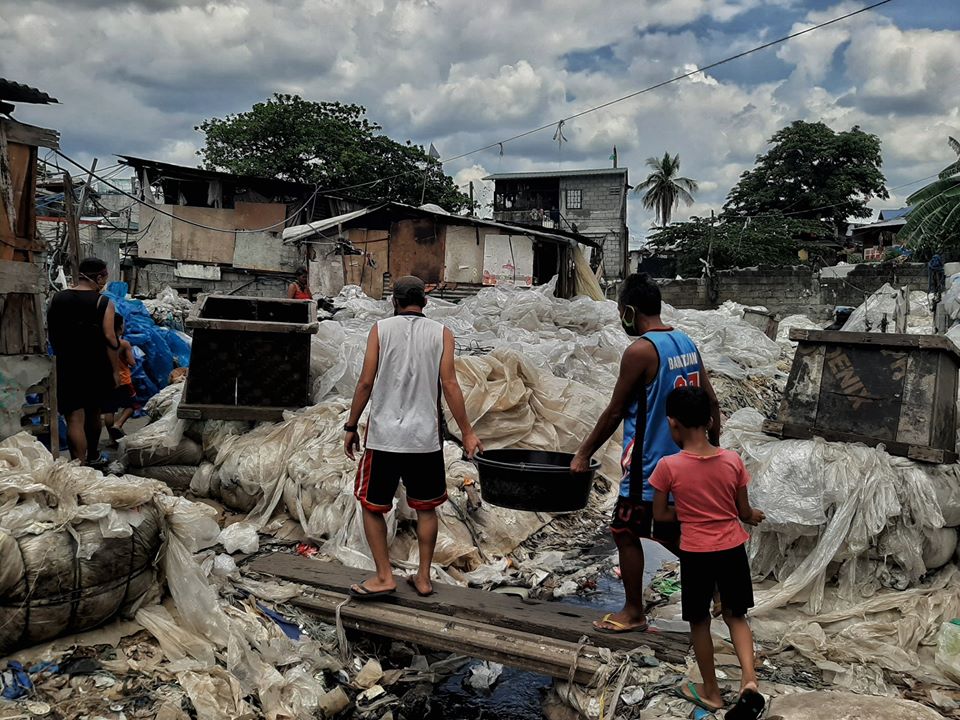
What response?
The logical place to start is from identifying what needs to be done. It’s a straightforward matter to just list what the government itself has already identified as needed, whether by the National Economic and Development Authority (NEDA) or as implied in the president’s reports to Congress.
There are the health interventions: personal protective equipment (PPE) and other logistical support for medical frontliners and responders; mass testing and surveillance; isolation and quarantine facilities in congested urban poor communities; and treatment facilities including medical supplies.
There are also the equally critical socioeconomic relief measures: emergency relief packages, cash transfers and other financial assistance, and business support for micro, small and medium enterprises (MSMEs).
And yet, so deep already into the crisis, the Duterte administration has failed to present a clear response plan to the public. Instead, the nation is fed a daily stream of anecdotal reports about its fragmented efforts. Clearly, these efforts are far from enough. The lived experience of thousands of frontliners and millions of locked-down households is stark neglect and unnecessary difficulties mounting by the day.
The president’s disorganized reports to Congress on March 30 and April 6 are of little help and in many ways just add to the confusion.
Compiling the various measures scattered in the reports shows the government apparently having plans worth Php233.9 billion. This includes Php38.6 billion for hospitals and other health facilities, Php114 million for emergency relief packages, Php154.4 billion for cash transfers and other financial assistance, and Php40.8 billion for local government units (LGUs).
This is getting close but still doesn’t correspond to the headline Php275 billion figure. The president’s reports to Congress seem to detail the Php200 billion emergency subsidies portion a little bit while leaving a gaping void in what the supposed Php75 billion for health care is about. In any case, something’s wrong if the government’s plan has to be built up in such a piecemeal manner.
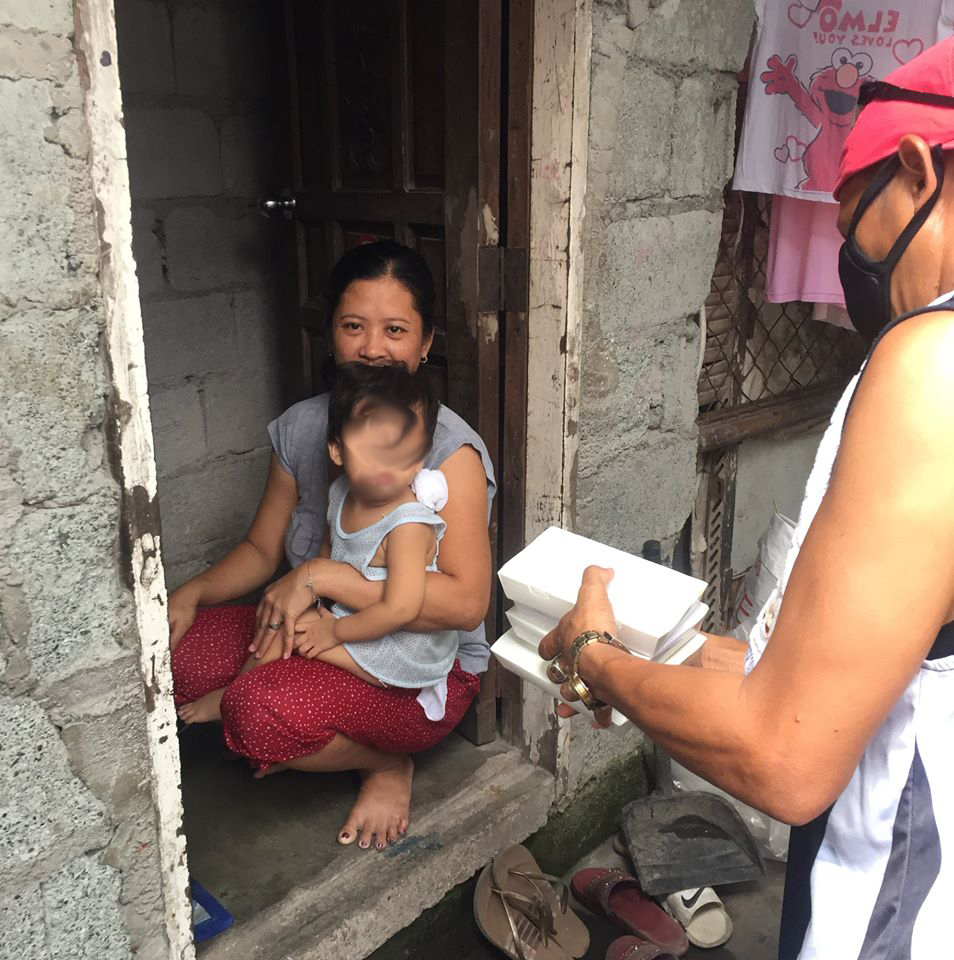
Slow response
The need for clarity about the response doesn’t just come from being unnecessarily obsessive-compulsive about details. Clarity about the response is the starting point of marshalling public resources and organizing the machinery for the immediate and effective response demanded by the crisis.
The disarray goes far in explaining the sluggish response of the administration to date. IBON estimates that up to 18.9 million workers in the formal and informal sector have been dislocated by the military lockdown; 14.5 million of these are in Luzon and the other 4.4 million in the rest of the country. ‘Dislocated’ is understood as work interruptions of some sort with varied risks of corresponding losses in wages, salaries and other income.
The month-and-a-half lockdown-induced disruption in incomes and livelihoods has dire consequences for the poorest 16.1 million low-income families in the country. Their monthly incomes are at most around Php20,000 or so, according to IBON estimates using data from the latest 2018 Family Income and Expenditure Survey (FIES) of the Philippine Statistics Authority (PSA). These poorest three-fifths (64%) of families are also those who have little or no savings to speak of, according to the Bangko Sentral ng Pilipinas (BSP).
The government itself has acknowledged the vulnerable situation of the overwhelming majority of the population. The Bayanihan to Heal as One Act (Republic Act 11469) explicitly said that 18 million low-income households – corresponding to around the poorest 75% of the population – will be given emergency subsidies.
Yet, weeks into the lockdown, the government response is still painfully slow and inadequate. It seems to have waited until hunger and unrest became critical. This is exemplified by the frustration of the urban poor residents of Sitio San Roque, Quezon City in the heart of the capital who were violently dispersed and, bizarrely, 21 of whom were even detained and charged.
It took three long weeks before emergency cash subsidies were released. And yet these have still so far only reached 3.7-4.9 million poor households – the government’s report is confusing – or not even one third (20-27%) of the supposed target 18 million households under RA 11469. Over two-thirds or as much as 11.5 million badly affected families are still waiting.
Adding insult to injury, the government could have reached as much as 10-15 million households immediately upon the lockdown three weeks ago. The president is also only able to report just a paltry 190,217 food packs distributed by the Department of Social Welfare and Development (DSWD). Underfunded local government units (LGUs), civil society groups, and concerned citizens have tried their best to fill this gap.
The government’s other emergency relief programs are doing even worse. The Department of Labor and Employment (DOLE) reports just 102,892 formal sector workers given Php5,000 in cash assistance under its COVID-19 Adjustment Measures Program (CAMP) – or barely 1% of 10.7 million workers in formal establishments nationwide. Only 55,934 informal workers have benefited from DOLE’s Tulong Panghanapbuhay sa Ating Disadvantaged/Displaced Workers (TUPAD), receiving just an average of Php3,121 each.
Up to 357,614 farmers and fisherfolk have supposedly been given zero interest loans under the Department of Agriculture’s (DA) Expanded Survival and Recovery Aid (SURE Aid) project, or granted loan payment moratoriums. This is just 3.7% of farmers, farm workers and fisherfolk nationwide. The president’s report however could not say how much this support was worth.
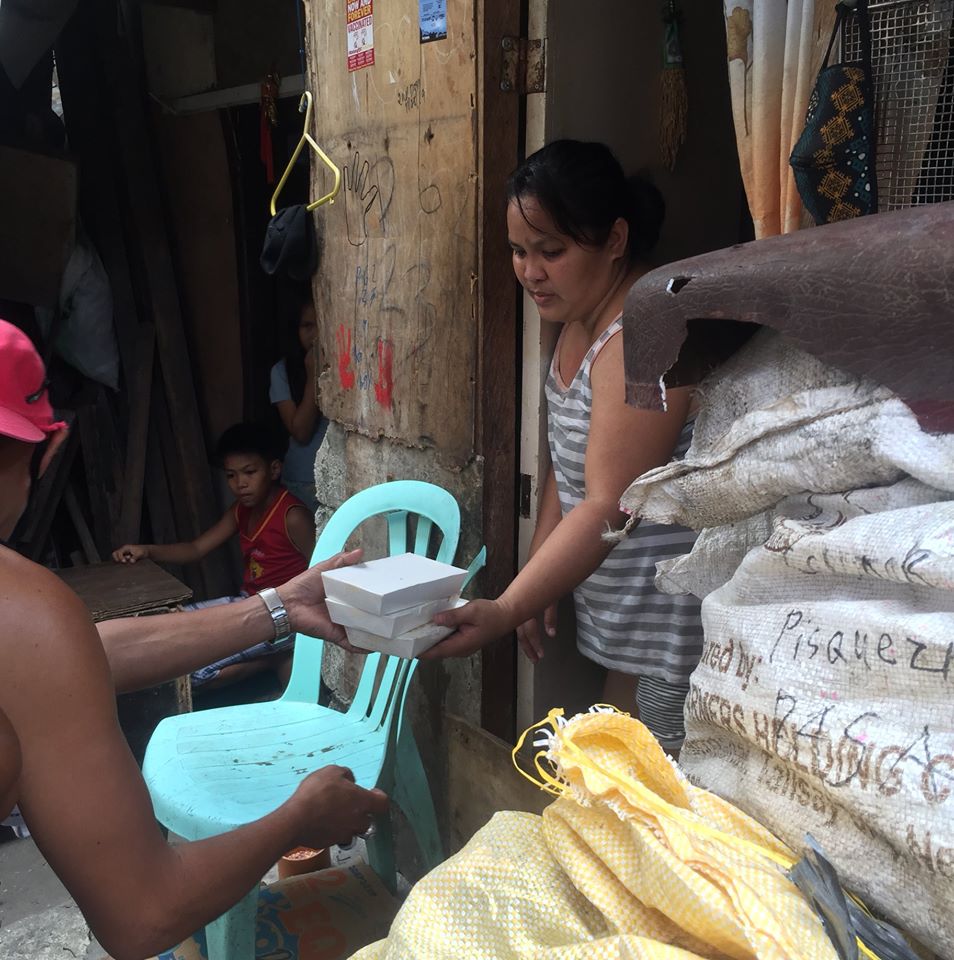
Stingy response
The Duterte administration may be giving repeated anecdotal reports to give the impression of sustained help. The response however is still clearly very slow.
At least part of the reason is the government rationing the help and putting so many bureaucratic hurdles for poor families. However, the importance of ensuring that all the neediest are covered far outweighs the redundance of some less needy being included. Choosing to err on the side of inclusion means dispensing with these hurdles.
But the response is also stingy in two respects.
First, the amounts being given are very small. Beneficiaries will welcome any aid given to them but the amounts fall far short of even the government’s underestimated official poverty line of on average Php10,727 nationwide and Php11,951 in the National Capital Region (NCR).
It is also probable that reported cash transfers for the poorest are bloated because the amounts likely include prior entitlements before the pandemic.
Secondly, the Php275 billion response package is too small to provide critical subsistence support to all the millions of affected households during the lockdown and in the immediate period right after. It is also far below the order of magnitude needed to support the consumption-driven stimulus that the economy needs to moderate the economic collapse in 2020.
IBON is among many others that have pointed out that the relief measures have to be much more ambitious. Our estimate is that Php297.1 billion monthly is more sufficient and should be given for up to 2-3 months at least. This does not yet even include perhaps Php300-400 billion in crucial support for critically affected businesses especially the country’s 998,000 or so micro, small and medium enterprises (MSMEs).

Funding the response
The president’s lamentation in his last report on government’s response about lack of funding of course raises a valid point. Hundreds of billions of pesos are needed not just to contain the pandemic but to keep the economy from sinking further after the lockdown. More so amid the global recession. And this is not even to speak of what’s needed in the coming years to build a more stable and self-reliant economy.
This is where the Duterte administration is particularly stumbling. It either does not appreciate the difficulties faced by the people and the economy, or chooses to be insensitive because it refuses to even consider the radical measures needed to address these.
The government can find the funding for COVID-19 response measures needed – on a scale many times over its Php275 billion program – if it genuinely wants to. The administration basically has three areas of financing:
1. Budget realignment. It can realign existing budget items under the Php4.1 trillion General Appropriations Act (GAA) for 2020 and Continuing Appropriations from 2019. This includes using savings from existing projects, activities and programs to outright discontinuing them and then diverting budgets to COVID-19 response.
The president’s first report to Congress mentioned Php372.7 billion in unreleased special purpose fund (SPF) allotments. This was presumably mentioned as the initial universe of budget items that can be realigned. By the second report, Php189.9 billion was said to have already been so realigned (including Php100 billion to the DSWD); a large part are reportedly from capital outlays.
However, the government can be much more aggressive in considering budget items for realignment. The Php9.6 billion in dubious confidential and intelligence funds – including Php4.5 billion just for the president – is a start.
The Php989 billion public infrastructure program should be opened up to greater scrutiny. The feasibility studies of these projects were all drawn up at a time of giddy optimism about the economy. However previous assessments of economic and financial viability will no longer hold in today’s greatly changed conditions. At the very least, the social need for many of them will have been overtaken by pandemic-related needs.
The current crisis can also be used to justify at least a moratorium on the government’s debt payments. The SPF includes Php451 billion just for debt service on interest payments. Outside the GAA, there is also Php582 billion for principal amortization. Political will can overcome accustomed automatic appropriations and the habitual deference to creditors.
2. Solidarity financing. The administration can resort to increased borrowing but prioritizing those with favorable terms for the country. The administration has already sold Php300 billion in government securities to the BSP in a classic monetizing of the deficit. It is also looking into borrowing US$1.25 billion from the Asian Development Bank (ADB) – aside from US$8 million in grants – and possibly another US$1.1 billion from the World Bank.
However, the government can consider issuing special COVID-19 bonds targeted especially at large corporations, financial institutions and oligarchic families. There is a huge concentration of financial resources and wealth in this regard that can be mobilized beyond individual donations during the lockdown. This is debt but it can be designed more on solidarity terms rather than on crude financial metrics to minimize the burden on the government. For instance, they can be at low, zero or negative interest rates and be zero coupon; making them tax-exempt can be a sweetener. Perhaps Php300-600 billion can be raised in this way.
3. New progressive taxes. With a view to the longer term, the administration can actually consider new taxes on those who can afford this. It is worth recalling that the TRAIN Law lowered the personal income taxes (PIT), estate taxes and donor taxes on the country’s higher-income groups. This already resulted in Php117 billion in foregone revenues in 2018 – with initial projections of foregone PIT revenues of up to Php193.5 billion in 2022.
The government can consider starting with reverting personal income, estate and donor taxes to pre-TRAIN levels. This focuses on those who, even with the pandemic, are still in a much better position to contribute to the national effort. Tax levels can be fine-tuned to keep higher tax rates on the super-rich and to preserve tax benefits for middle-income households affected by the pandemic and the economic crisis to come.
COVID-19 has highlighted the critical importance of government intervention and public resources in a time of crisis. But it should also drawn attention to how significant government intervention is needed to address chronic problems of poverty, inequality and underdevelopment.
The radical shifts in economic policies the country needs after the pandemic and entering into a world economy in recession will demand huge government resources, among other interventions. Building up the public health system is just the start and the country’s agricultural and industrial system needs to be significantly and rapidly bolstered. A progressive tax system is among the many crucial policy measures to do these.
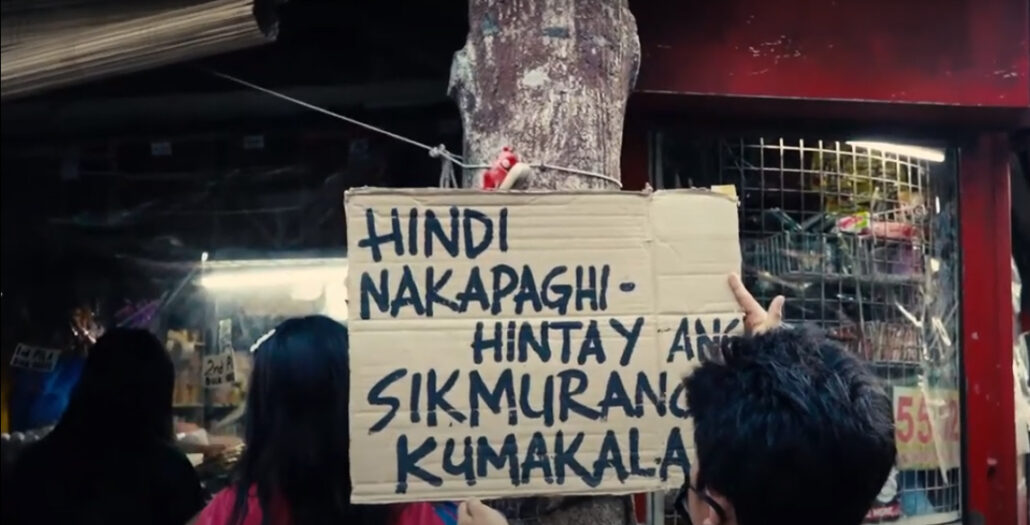
Unprecedented crisis
Time is running out for the Duterte government to put together a bold a COVID-19 response package. The country is still at the start of a steeply rising curve of infections and fatalities. After the lockdown, the economy will be facing a steeply falling curve of severe economic crisis.
Every day of delay means more distress for the poorest and most vulnerable, micro entrepreneurs and small businesses sinking, and of course the virus just waiting to spread even more rapidly once the lockdown is lifted.
The priority is saving lives and easing hardship. The problem right now is not lack of a national effort to deal with these – so many Filipinos are struggling everyday to deal with the pandemic and they deserve all the help they can get.
As so many are already realizing – the problem is at the top. #
* Updated April 12, 2020 to clarify tax proposals
= = = = =
The author is the executive director of IBON.org


